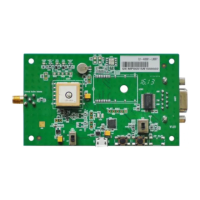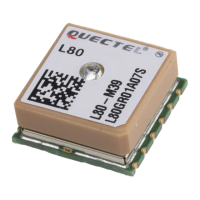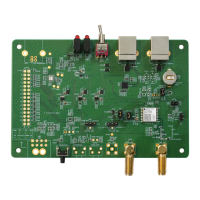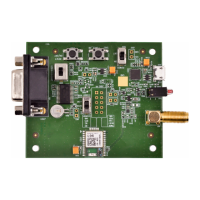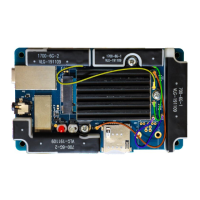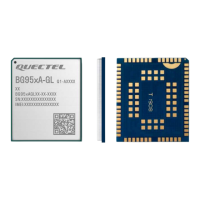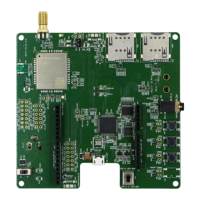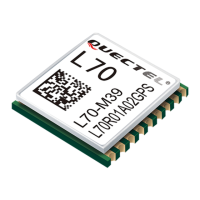GNSS Module Series
L76&L76-L_Hardware_Design 15 / 59
1.5.4. Galileo
They are designed to receive and track Galileo E1 (1573.374–1577.466 MHz) signals provided by
Galileo.
1.5.5. QZSS
The Quasi-Zenith Satellite System (QZSS) is a regional navigation satellite system that transmits
additional GPS L1 C/A signals for the Pacific region covering Japan and Australia. These modules can
detect and track these signals concurrently with GPS signals, resulting in better availability especially
under challenged conditions, e.g., in urban canyons.
1.6. Augmentation System
1.6.1. SBAS
The modules all support SBAS (Satellite-Based Augmentation System) broadcast signal reception, and
GPS data are complemented by additional regional or wide area GPS enhancement data. The system
enhances the data through satellite broadcasting, and the data can be used in GNSS receivers to
improve the accuracy of the results. SBAS satellites can also be used as additional signals for range or
distance measurement, further improving availability. Supported SBAS systems include WAAS, EGNOS,
MSAS and GAGAN.
1.7. AGNSS
The supported AGNSS feature significantly reduces the modules’ TTFF, especially under lower signal
conditions. To implement AGNSS feature, the modules should get the assistance data including the
current time, rough position, and LTO data.
1.7.1. EASY™
The modules support the EASY™ feature to improve TTFF and improve the acquisition sensitivity. To
achieve that goal, the EASY™ feature provides assistant information, such as the ephemeris, almanac,
last rough position, time, and a satellite status.

